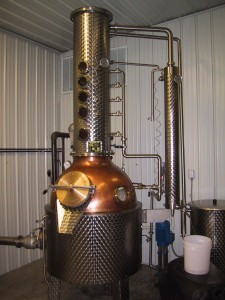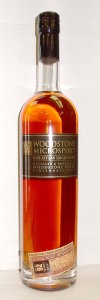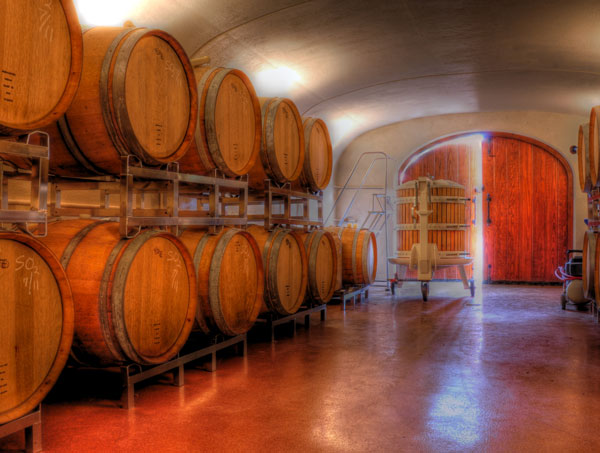More Midwest Wineries Adding Distilled Spirits

Huber’s Christian Carl copper still, used to make brandy, was made in Germany.
As the economy continues to limp along, more winery owners are diversifying their product offerings to boost their bottom lines. Some wineries are adding brewing capabilities, but in the Midwest, more wineries are starting a distillery, producing vodkas, gins, whiskeys, brandies in addition to wine.
For example, Woodstone Creek Winery in Cincinnati became the first licensed micro distillery in Ohio when 12 years ago it installed a direct-fire pot still. Woodstone Creek owner Don Outterson says, ‘There are 14 micro-distilleries in the state now, though most are independent and not part of a winery. Still it’s a lot easier to set up a distillery if you already have a winery. You’re dealing with inspectors and government officials you already know, and some of the paperwork for both is the same.” However, alcohol production permitting can take three to four months in Ohio, Outterson said.
See related story: Jacob’s Juice: Winery & Distillery is a Perfect Match
Unlike most micro-distilleries, Outterson says he began making whiskey first. ‘Generally, a distillery starts making vodka because it’s more forgiving in terms of learning the process, and since it isn’t aged, it can be sold quickly to bring in income.” But that’s where his winery’s profits gave him the edge. Outterson was able to make whiskey first and set it aside to age. When it was ready, he opened his distillery, offering both vodka and whiskey for sale.
‘If you’re a winery that’s big enough to add a distillery, I think it would be a good idea to do so,” says Outterson. ‘People are more open-minded about Midwest spirits than they are about Midwest wine. They’ll give them a try.”
Outterson also believes that for regional consumers, distilled spirits face less global competition than wines. “With relatively inexpensive wines being imported from three continents, Ohio wines sometimes find it difficult to compete,” says Outterson.
Another benefit of a distillery is that it can be up and running faster than a winery that produces its own grapes. From the time the equipment arrives and is made ready for the distillation process, it takes a minimum of 12-18 months to have white spirits in the bottle, and up to 3 years for barrel aged spirits, according Christian Moersch, general manager at Round Barn Winery in Michigan. That’s why Outterson believes Ohio will see more wineries adding distilleries in the future. ‘If it’s done right, a distillery can make money more quickly than a winery,” he says. ‘It makes sense in the future for winery owners to do it.”
Ted Huber of Huber’s Orchard, Winery & Vineyards in southern Indiana went to some lengths to open his distillery. ‘We wanted to use every bit of our fruit internally, so we went to the legislature to request approval to produce distilled spirits,” he says. Consequently, a law was passed in 2001, written specifically for Huber’s Winery, that allowed the kind of distillation he was looking for. ‘It’s a very narrow law that allows us to distill fruit brandies only,” says Huber.
But while the fruit brandies are popular with the 550,000 visitors who come to Huber each year, fruit brandy sales account for only 5% of the winery’s total income. So Huber is back with lawmakers, trying to broaden the language of the law so he can produce bourbons, gins, and vodkas. Huber knows that will open the door to more competition, but the trend is already making headway in the state. Four winery-distilleries are now operating in Indiana, and two micro-distillers are producing spirits.
Meanwhile, Christian Moersch at Round Barn Winery in Southwest Michigan (the historic main tasting room is pictured on the homepage), says they began distilling a dozen eau-de-vies (fruit liqueurs), as well as grappa and fruit brandies when their distillery opened 13 years ago. ‘The area we’re in is known as the buckle of the fruit belt,” he says, “so it was a natural fit.”
“People enjoyed the fruit liqueurs— once they understood what they were,” says Moersch, explaining that it took some work to bring customers to a level of understanding about the new distilled products. That’s why Round Barn decided to reduce the number of eau-de-vies for sale and produce more familiar spirits like vodka, rum and bourbon. Fortunately, Michigan laws are business friendly, so the progression wasn’t difficult to do, Moersch said.
The Round Barn distillery is profitable, according to Moersch. It accounts for 10% of the winery’s total sales and is roughly equivalent in revenue with Round Barn’s on-site brewery. ‘Diversification is always a good thing in business,” says Moersch, adding, “that’s why the winery continues to evolve and to try new things. A barrel-aged rum is next for Round Barn.”
“Diversification may be good practice, but this is a tough time to get started in the distillery business,” Moersch cautions. “There is additional licensing to procure and the equipment doesn’t come cheap. Most of the stills come from Europe and shipping is expensive. Nevertheless, adding a distillery can separate many wineries from the competition. You need to look hard at the numbers. Then decide if it’s right for you.”
All of the wineries contacted for this story allow visitors to sample distilled spirits in their tasting rooms. Most states restrict the amount of liquor that can be poured at a tasting to one ounce per customer. Kentucky bourbon distillers are known to split their tastings into half ounce pours so customers can try more than one spirit. However, most Midwest winery distillers do one ounce pours. Ted Huber in Indiana said that his winery could have obtained a license to serve cocktails but decided not to do so. He said that serving cocktails would not be consistent with the Winery’s family atmosphere and might create issues with over-served customers.
Publisher’s Note: During late December 2011, Ohio passed new regulations allowing micro-distilleries to sell product directly to consumers at their facility or for carry out. The new Ohio law also expands the number of distillery permits available.



